A FILM ABOUT THE LATE CHEF OF MOTO, Insatiable: The Homaro Cantu Story, debuted at South By Southwest this past March and has been making the rounds of film festivals since then; it comes to the Chicago International Film Festival for two screenings on October 17 and October 24.
For people in other places, Cantu’s story may be unfamiliar (and its baffling, tragic end a shock). But Chicagoans lived through the strange transformation of Cantu from acclaimed chef and visionary (with a healthy dose of showman), basically turning dinner into a series of playful magic tricks and illusions, into someone who genuinely wanted to change the way we eat through the use of an African fruit with a unique ability to alter the perception of sweetness, the “Miracle Berry.” And the film, which was shot during the last months of Cantu’s life, may finally answer some questions about a chef who helped establish Chicago’s modern culinary image, but then seemed to want to escape his own reputation—and his own troubled past. I spoke with the film’s Chicago-based director, Brett A. Schwartz, by phone recently.
FOODITOR: I know that Homaro Cantu had a way of drawing people into his orbit. How did you get involved with filming him?
BRETT A. SCHWARTZ: I came from outside of the culinary, “foodie” world completely. As a documentarian, I would just enter different spaces. I first found out about Omar, I think it was a New York Times article in 2005. He was young, and it was really focusing on the printed food, and the [edible] menus. And you’re always looking for things in your hip pocket, so I thought about it for a moment in terms of coverage, but I thought it might be a bit of a one trick pony, or seemed a little bit gimmicky, which was part of it.
And about ten years later, I got interested in the notion of innovators and innovation, and I circled back to see what he was up to. Because I knew that he was trying to pivot out of the kitchen and be an innovator. And that was really the thrust for me. It was amazing that he developed Moto and was an admired chef, but I was interested in his desire to be a social innovator, to make the world a better place. That pivot was really what captured me.
So I literally just reached out to him via Facebook Messenger and we went from there.
Did you start by shooting behind the scenes at Moto?
I didn’t know if I was going to be telling a tripartite kind of thing where I would profile him and marry it with other social entrepreneurs. After he said “Yeah, come on by, let’s meet,” we talked, and then I think the first shoot I did with him was he and Richie [Farina] practicing for the Iron Chef America rematch with Morimoto. [Cantu had won his first match in 2007.] That was exciting just getting down and dirty in the Moto kitchen.

Homaro Cantu in the kitchen at Moto
That was the first shoot I did, and literally the day after I was following around with some journalists when he was trying to open up the Lab and think about Miracle Berry applications.
How did you cover the part of the story that took place before you got there?
One of the biggest challenges for me was that Omar was everywhere in terms of media. Video as well as print. So my question was, what’s the added value [of existing footage]? I decided I’d focus on, one, that pivot, and stick on him longterm. So in terms of previous stuff, I didn’t really pick up much of that, for instance, the TV series that he did for Planet Green, Future Food. There’s nothing in my film really about that. I do mention a little about Iron Chef.
I was fortunate to license a lot of photos from him and his widow Katie, and his sister Angela, to tell the early story. Especially the childhood and adolescence, things like that.
I remember when he was basically writing his memoirs on Facebook, those fascinating and harrowing stories of his childhood, where his mom used drugs and he was often homeless, and the love of food being developed in him, notably at Charlie Trotter’s. How do you see his childhood figuring into his story?
That part of the story was coming out a little bit as I was starting to film him. I knew that was going to be a piece of the puzzle in terms of profiling him. But the first time I did a formal, full-on sit-down interview with him, we literally made it through four of my questions before he went into that mode, that really reflective mode he was in on Blogger and Facebook, and I literally felt like I was a priest in a confession booth. It just oozed out of him, and he was so eager to tell that story at that moment. Something was going on inside of his psyche at that moment, because he was making that pivot.
As a documentarian, you have to anticipate where you’re going. You don’t know what your ending is going to be—you don’t really know the middle until you’re in the editing room. I anticipated this being a redemption story. I, like a lot of friends and close relatives, did buy the narrative that this traumatic past gave him the strength to carry on and to take on risks that would have scared a lot of other people. Because he hit rock bottom at age nine. And he talked that way.
I never intended, obviously, and I don’t think anybody expected, when he died the way he did, that part of the narrative would be that those risks did lead to him being in the mindset where he didn’t feel he could carry on.
Where did the title “Insatiable” come from, and what does it mean to you?
Titles are so hard, and they’re so subjective. In film they’re like music, you’re never going to have a soundtrack that pleases everyone. It’s so personal. But it’s a descriptor of who he was, he was insatiable. He lived life in a way that he didn’t want to slow down. Certainly he was that as a chef and as an innovator.
Tragically, that sense of being insatiable meant that he couldn’t find a place to rest and look back and say “Wow, I’ve achieved this. I’m ready to move on to the next thing. Having six or seven balls in the air is a little bit crazy at my age, and having a family.” Just that notion that nothing could stop him, not just physically but that was really down to his DNA, this desire to keep giving and pushing.
I anticipated this being a redemption story. I did buy the narrative that this traumatic past gave him the strength to carry on and to take on risks that would have scared a lot of other people.
And that was really the thesis that guided me, because I learned about the culinary world and met a lot of chefs and spent time in the kitchen, and that was such a joy to be able to step into a world and learn. But I was really interested in using Omar’s story to get into the mindset of people who want to change the world, and wake up every morning and can’t stop.
Because one thing we know about him is that he was so giving, that he almost had nothing left for himself. And also, he might have had too much going, so that he couldn’t zero in on one of those items, like Moto. He didn’t want to be Grant [Achatz]. He did but he didn’t. He didn’t have—I don’t know if it was the discipline, but the desire to zero in one one thing, just plying his trade as a high level chef. He wanted to do two or three other things, too.
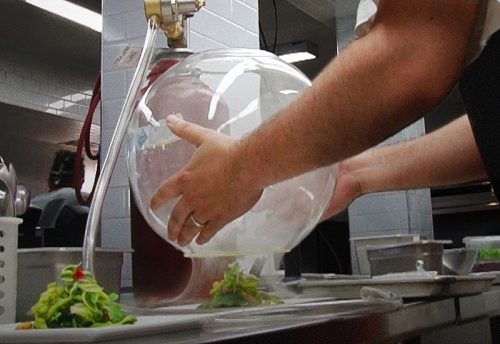
Plating at Moto
Well, that’s what I always wondered, was being a chef and having a restaurant not enough for him? Because I think one of the things you have to do, at that level, is to micro-focus on things that can seem a little silly from outside, that one tiny experience for somebody. Did he get tired of micro-focusing in that way?
I think that’s a good way to put it, and I think he definitely cultivated a team where he could have done that if he’d chosen to. He wanted more stars, he wanted more Beard accolades, but he knew why he wasn’t there—he was not like a laser beam for 17 hours on just that, he had a lot of other things going on.
At some point he discovered the Miracle Berry. For me, so much of what he had been doing was magic tricks, illusions for the diner. Where the Miracle Berry was like actual magic—it changed your perception of reality, it changed sour into sweet. What do you think the Miracle Berry meant to him, and what did he want to do with it?
For Omar the Miracle Berry was the best vehicle for him to shake up the larger food industry. I think his dream was, not to convince people to eat better or exercise more, but to literally let them have their cake and eat it too. He wanted to figure out how to get those Miracle Berry properties into food, at the molecular level, and then license it over to Kraft or whomever. And he saw that as the best pathway to help people and take on the obesity epidemic.
And I think that really connected to his own experiences as a young person, eating really horrible food. He admitted that because of that, he felt basically addicted to junk food. He never wanted to give it up. I think he thought that the work he did with the cookbook, and iNG [a spinoff restaurant which at one point focused on the Miracle Berry] and some of those things were just an engine to release that Miracle Berry out there and open up a new sector.
Some detractors said that was utopian, it was never to be. But it was an object of obsession for him, and I think that was something that he had to wrestle with—he had to figure out what’s the broader application, but some people saw it as a distraction from what he was doing [as a chef], and that’s one of the things that the film is meant to show—how you need to obsess with certain things to see how far they’ll go. Because I do think he felt that he was getting a little eclipsed as a Chicago chef, by his former colleagues, whether it was Grant, or Graham Elliott, or whomever.
What about the people who worked for him, like Chris Jones or Richie Farina? Are they his legacy in some way, the way he and Graham Elliott and others were Charlie Trotter’s legacy?
I came from outside the culinary world, but my interpretation from following the Bourdains of the world is that a lot of kitchens call themselves “pirate ships.” You have all these people stuck together, uber-masculine, and it’s hot and a little dangerous once in a while. Where the Moto people called themselves the “Island of Misfit Toys”—they came from troubled pasts, broken homes, but together they were like a platoon and greater together.
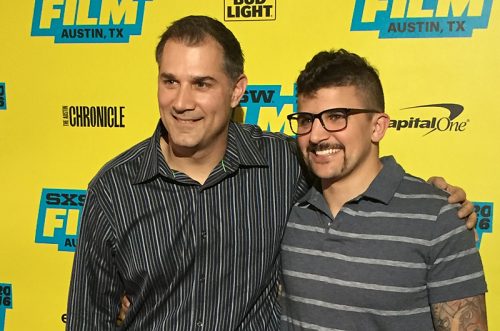
Filmmaker Brett A. Schwartz with former Moto chef Richie Farina at SXSW
I think Omar took what he thought were the best lessons of Trotter and pushed everybody really really hard, but he felt like he could coach them and give them opportunities. And I know every time somebody big left him, he said, “This is the best thing that could happen, they’re going to take their skills from here out there and move them forward.” But I knew it also hurt because he had to go back on the line, he had to hire.
But the other thing that’s really interesting is the whole Hampton Creek thing [a controversial Silicon Valley startup seeking to make plant-based egg substitutes]. That’s his core crew. I think [Josh] Tetrick, the CEO, really wanted to get Omar out there to launch this thing, and instead he got Chris Jones. A couple of years later Ben Roche went out there, and Richie Farina is consulting and jetting around doing popups and demos for them. So you’ve got 5 or 6 or 7 chefs who worked in Moto’s kitchen, working for a food startup to do a lot of things that Omar wanted to do. And one of the throughlines in the film is, Omar wants a lab. Well, here’s the lab. It’s called Hampton Creek Foods.
Watch the trailer here:
[su_vimeo url=”http://vimeo.com/153727254″ width=”700″]
Images courtesy of Brett A. Schwartz.
Michael Gebert is the editor of Fooditor.
Latest
Join the Discussion
After you comment, click Post. If you're not already logged in you will be asked to log in or register with Disqus.





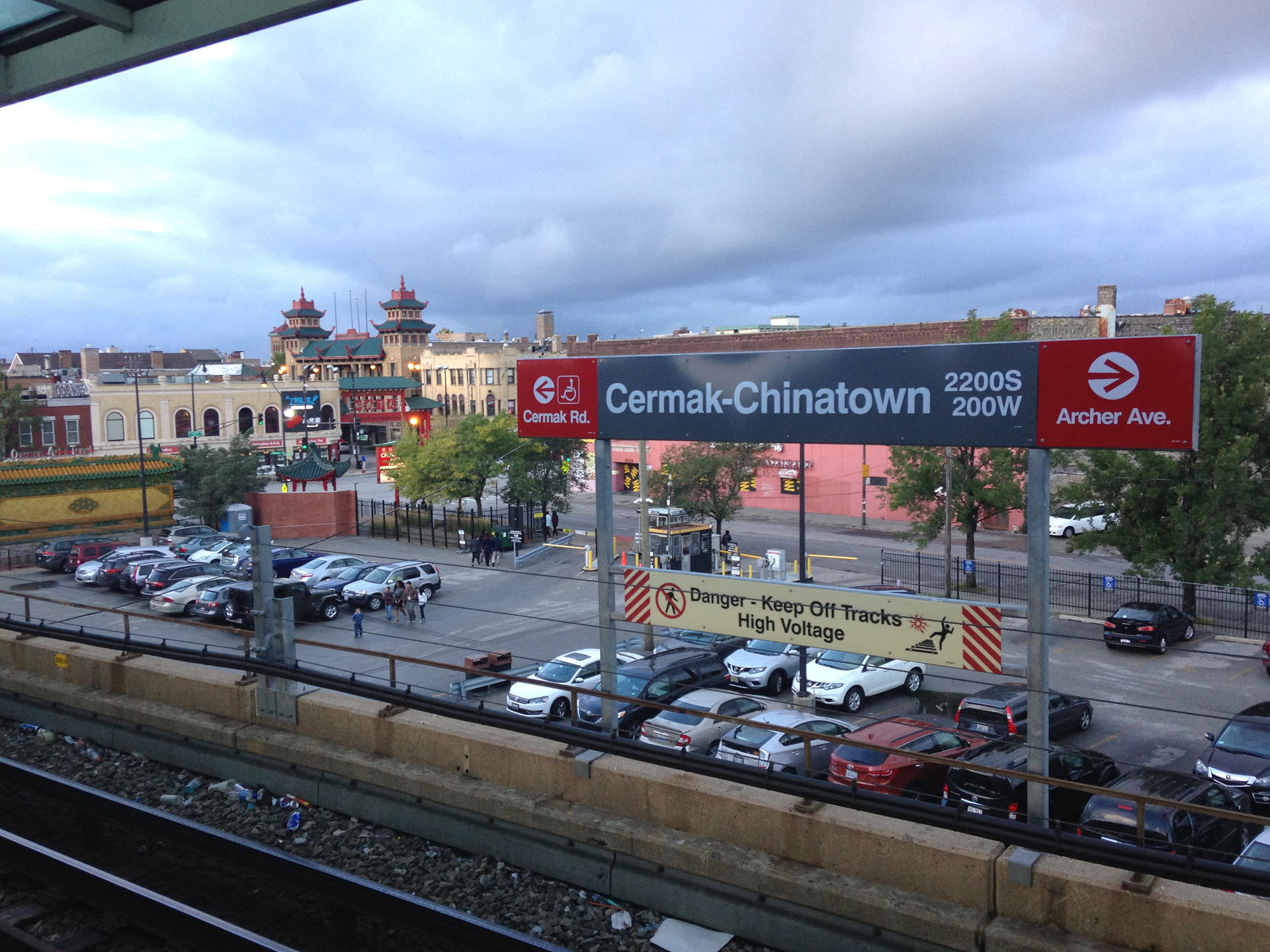
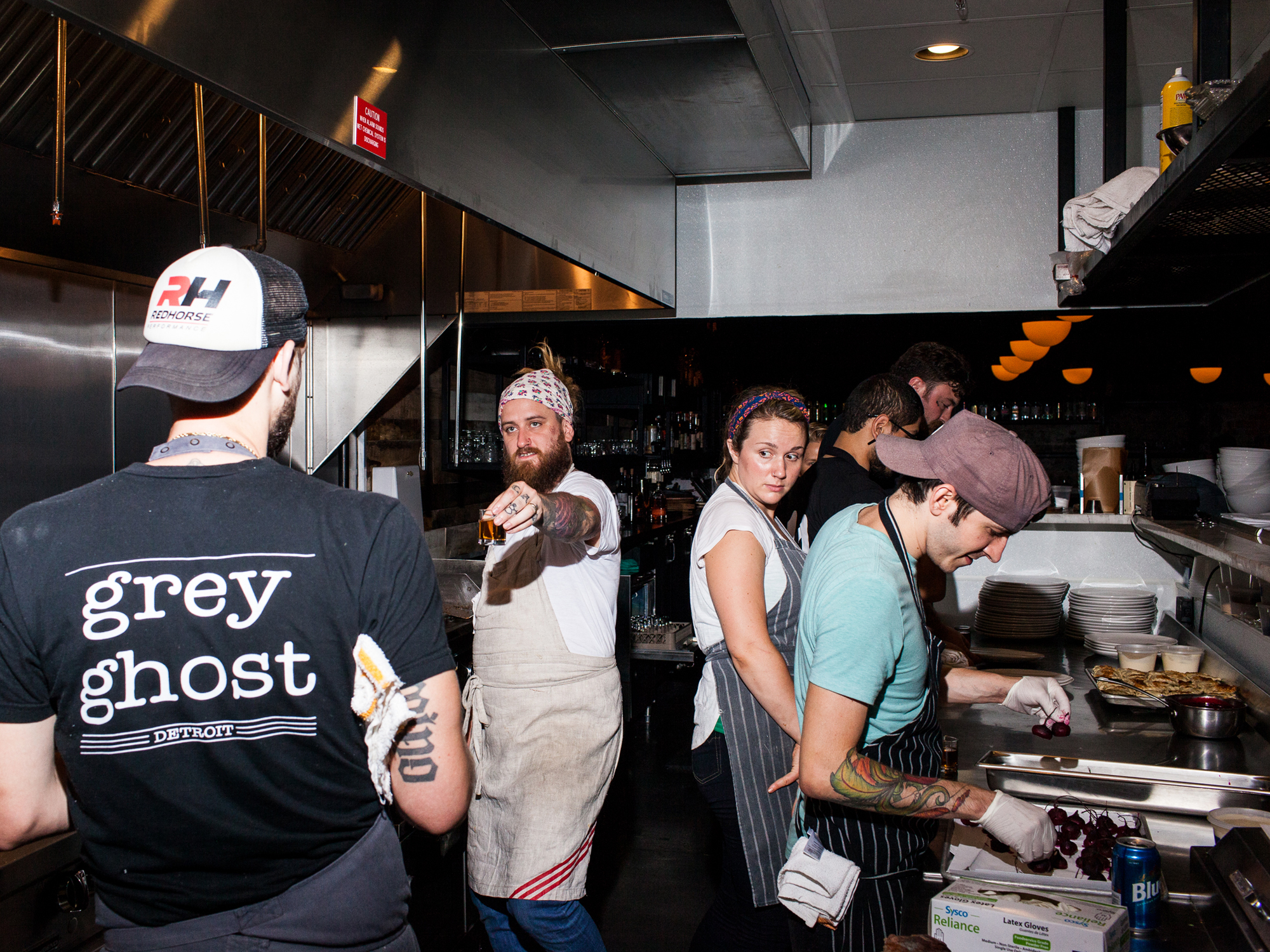
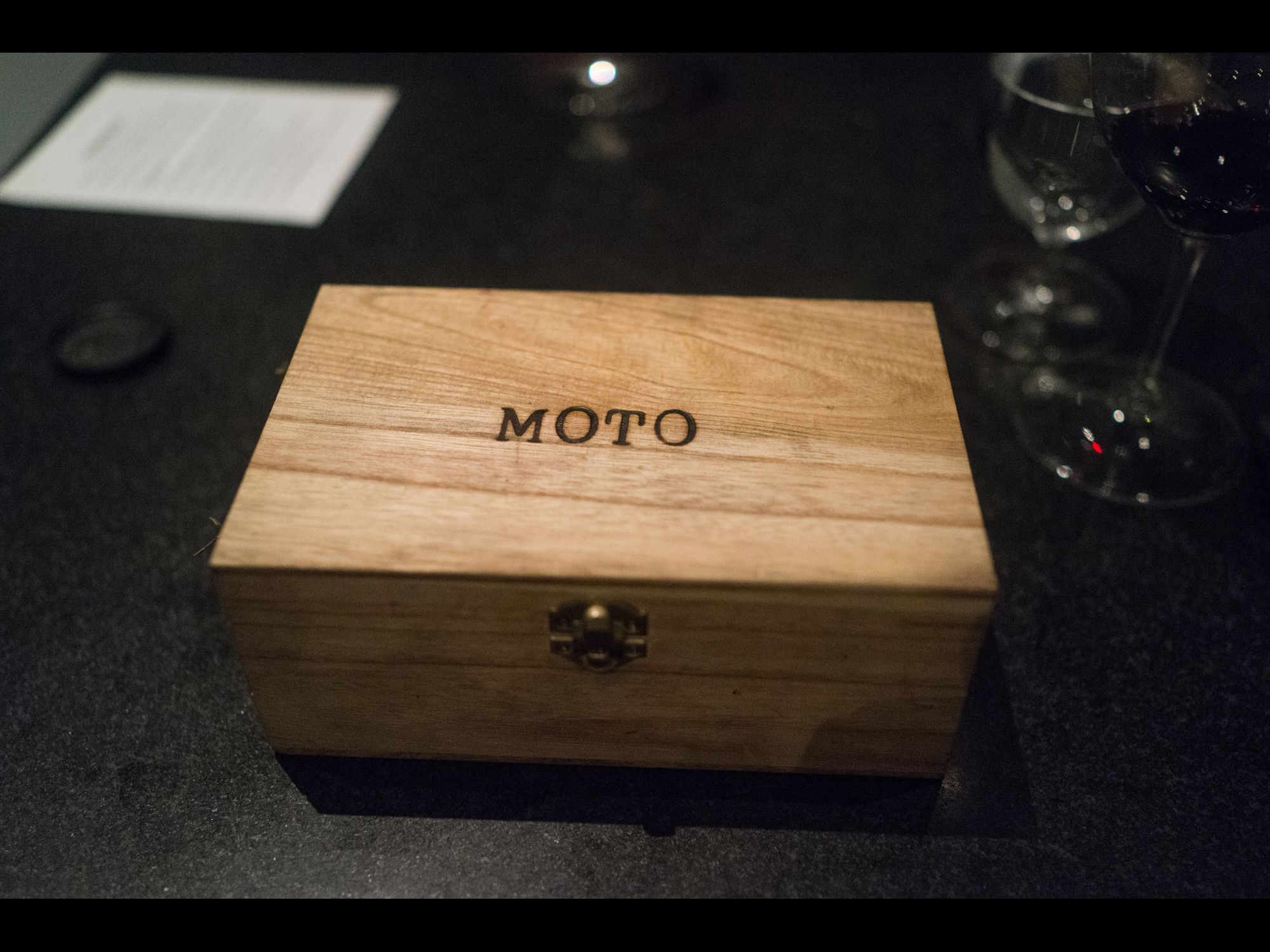
Sounds like a fascinating film. And interesting to learn a bit more about the Chicago connections to Hampton Creek which sounds like it’s facing some serious issues: https://www.bloomberg.com/features/2016-hampton-creek-just-mayo/